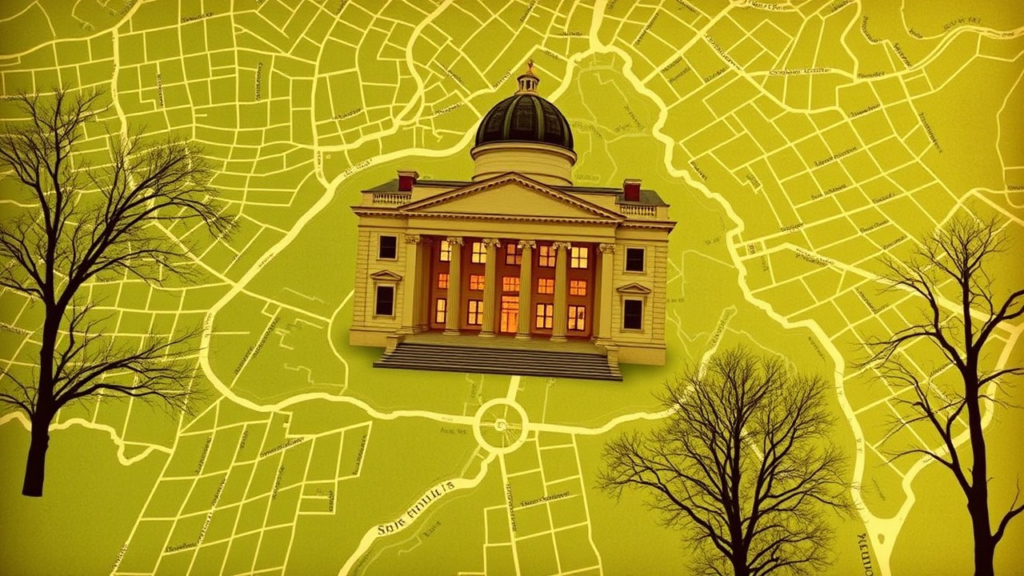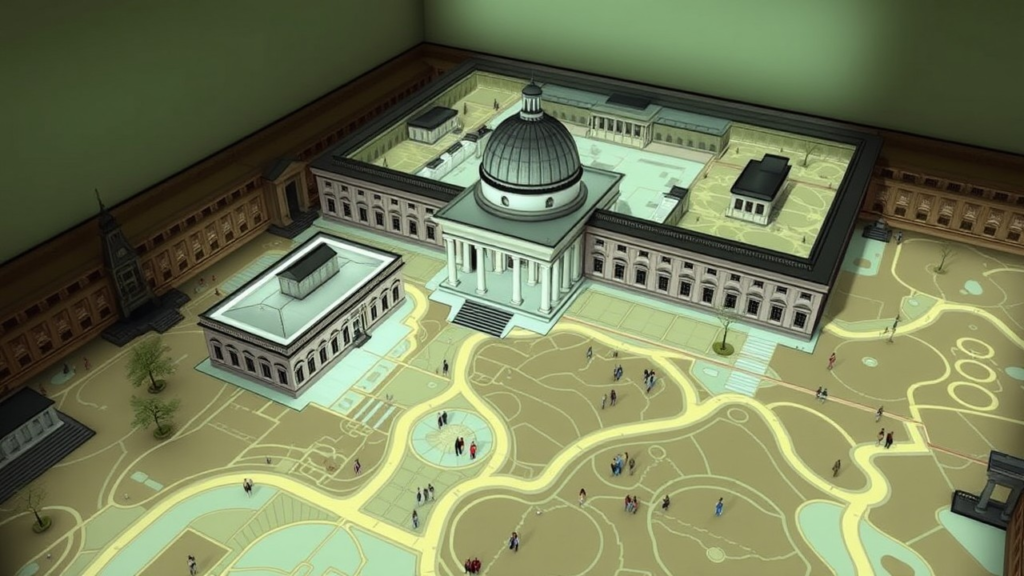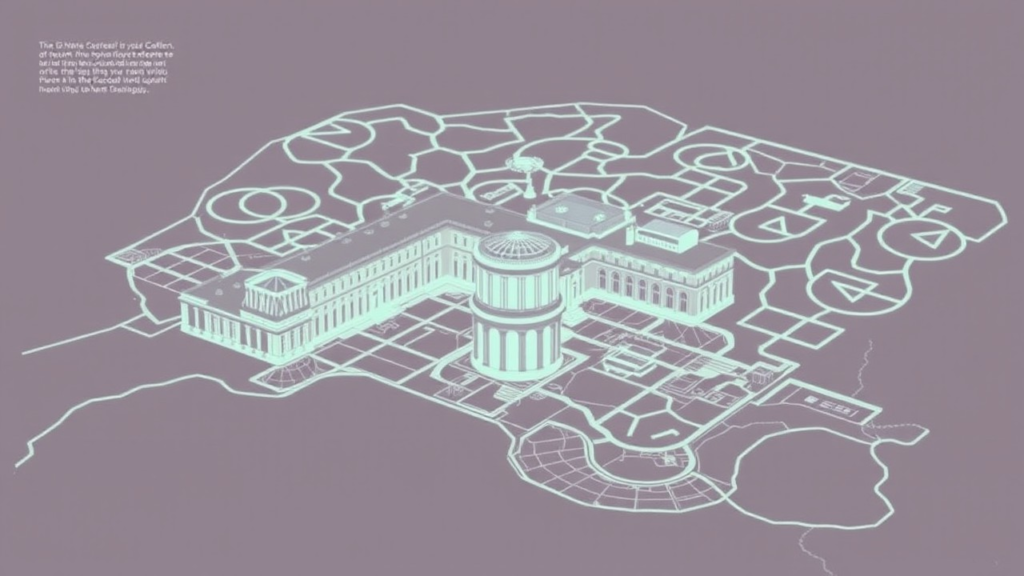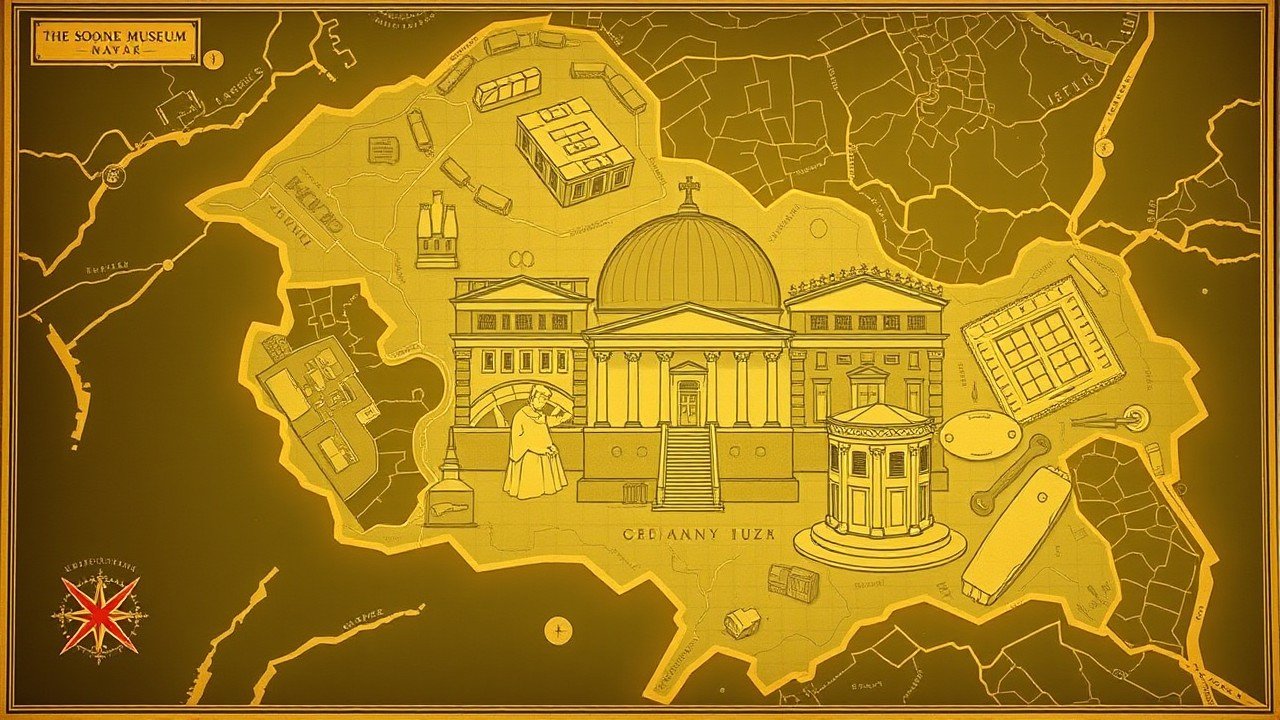Introduction
The Sir John Soane’s Museum in London is a masterpiece of architectural ingenuity and spatial storytelling. Renowned for its intricate design and eclectic collection, the museum provides visitors with a unique experience of interconnected rooms, vibrant artifacts, and shifting perspectives. Among the many methods to analyze and appreciate such a dynamic architectural space, the concept of an isovist map of the Soane Museum has gained significant traction. This technique, rooted in spatial analysis and visibility studies, allows one to explore the visual experience within a built environment systematically and scientifically.
The complex spatial organization of the Soane Museum becomes easier to understand via its characteristic isovist mapping system. An isovist perception stands as a visual depiction showing every viewable space surrounding a specific position in a geometric area. Using the Soane Museum as an example, the tool shows how the architectural elements seamlessly layer and shine while Soane strategically framed every aspect within the structure. Through isovists, we can gain access to multiple understandings of both building design and emotional reactions, which Sir John Soane intended to create in his museum visitors.
To understand isovist maps as applied to the Soane Museum, we first need to understand what makes an isovist. In the 1970s, the architect and theorist Michael Benedikt developed the analytical tool known as ‘isovists’ to explain space visibility and human perceptual effects. Architects, together with researchers, create a field of vision maps to examine how people feel space and light move through space and how visual areas connect because of their placement regarding each other. In the Soane Museum, these principles find a profound application.

Sir John Soane measured each design aspect of his residence to establish a work of art. The space was carefully designed from every possible perspective in order to generate precise visual and emotional results throughout each corner and niche. The analysis of Soane Museum through isovist mapping reveals his deployment of deliberate visual paths along with reflective materials to lead visitor sightlines while generating unexpected pleasurable moments. An isovist map delivers an exclusive translation methodology for revealing architectural concepts behind the museum’s spatial plot.
The Soane Museum: A Study in Architectural Complexity
The Soane Museum stands as an architectural masterpiece that showcases the artist’s creative intent as well as his architectural principles. Visitors walking through the museum experience rooms connected by a winding pathway containing many objects, including sculptures and paintings alongside architectural models. Large open galleries are absent in the Soane Museum because its designers adopted a method of utilizing a complex layout of interwoven spaces. The estate offers visitors a continually moving sensory journey through its narrow passageways and hidden passages together with its variable spatial dimensions.
Analysis through an isovist map demonstrates the multifaceted nature of spatial organizing at the Soane Museum. Soane demonstrates his mastery of light manipulation when natural illumination passes through the Picture Room and Dome Area while detecting spatial enhancement. The visualization of the mapping process reveals how museum visitors are led step by step toward exploration throughout the space. Navigation from one room to the next at the Soane Museum occurs because of strategic window placements. Visitors catch glimpses of fascinating interior objects alongside light beams seen through precise architectural openings. Spatial storytelling in the Soane Museum comes to life thanks to subtle cues that are captured effectively using isovist mapping techniques.

Creating an Isovist Map of the Soane
Creating an Isovist map for the Soane Museum demonstrates dual requirements of design and technical implementation. The visibility analysis starts with choosing specific locations throughout the museum to conduct the study. The visibility analysis points should be strategically placed at crosswalks as well as sites near important exhibits or commemorative artifacts and standalone spots that draw viewer attention. Each survey point serves to track visible areas and includes the walls, doors, and windows, as well as architectural elements that shape visual boundaries.
The combination of advanced CAD (Computer-Aided Design) programs and GIS (Geographic Information Systems) allows researchers to create precise isovist maps. These spatial mapping techniques applied to the Soane Museum expose its fundamental visual patterns. An isovist map of the library dining Room enables researchers to see how the strategic bookshelves insertion and mirror positioning alongside furniture elements shape an area with deep visual complexity. These spatial relationships can be understood through a Monk’s Parlour map that demonstrates how small areas connect with their neighboring larger interiors through visible gaps between rooms.
Insights Gained from the Isovist Map
The Soane Museum Isovist map reveals vital information about design strategies while providing a critical understanding of visitor navigation patterns. Soane’s visual framing abilities emerge as a standout discovery from his design approach. With his architectural design, Soane strategically built arches and niches, as well as windows, that created organized glimpses of showcases or additional rooms. By employing this method, Soane’s designs showcase featured aspects to visitors while achieving a multi-tiered perception.
The museum’s atmosphere results from various ways in which light functions within its space. Visitors can see illumination patterns produced by specific window and skylight placements on the isovist map that reveal light-illuminated zones together with shaded portions of the building. When professionals place light strategically with shadow across the space, they create a deeper dramatic effect.
Through the isovist map, visitors gain a deeper understanding of how they move through the museum. Analysis of visibility at various locations in space reveals natural visitor flow patterns. The way the Soane Museum is designed serves to create a curiosity-motivated exploration experience because it uses visual aiding devices to promote movement through its successive rooms. Through the isovist mapping technology, we can see how Soane managed to create a flowing space that showcases his architectural mastery.

The Emotional and Sensory Impact of the Soane Museum
Beyond technical analysis, the Soane Museum isovist map reveals physical and sensory perceptions embedded within its design layout. The museum architecture targets an emotional response across three affective dimensions, starting from interest to deep reflection and awed amazement. The isovist mapping method identifies key spatial qualities by showing how bounded and open areas combine with measured illumination conditions and object placement techniques.
The Dome Area creates a strong sensory experience through its skylight design that presents an elevated visitation experience combining lighting effects with massive dimensions and geometrical form. Analyzing this moment through isovist mapping techniques reveals the structural components that shape vertical dimensions and permeable space relations. Visitors feel contemplative scrutiny when experiencing the Sepulchral Chamber because it features low ceilings and dim lighting. The emotional responses visitors experience derive directly from spatial characteristics, which the isovist map effectively captures.
The Broader Implications of Isovist Maps
The isovist mapping of the Soane Museum reveals essential design features along with visitor pathway dynamics, yet simultaneously, it opens up new avenues for architecture and spatial research methods. These analytical maps serve to study spaces across historical architecture and contemporary urban environments. Through their analysis of spatial design and viewing possibilities, architects, together with planners, make environments that excel in both function and emotional impact.
Soane Museum visitors can understand the enduring value of Soane’s design approach using an isovist map. His design approach stands as proof of his architectural genius because he makes spaces that visually enchant and emotionally affect people while intellectually stimulating them. These visualization methods help us understand why the Soane Museum continues to fascinate visitors by revealing properties that are essential to its enduring success.
Conclusion
An isovist map of the Soane Museum acts as both a technical assessment and observational tool, which shows the design brilliance of Sir John Soane’s iconic structure. Through its visualization of museum spaces, the isovist map provides visitors with an enhanced assessment of design elements and their unique dimensional and tonal effects. Through its function as a spatial analysis and architectural storytelling method, the isovist map keeps inspiring architects, researchers, and fans to understand better the strong connection between emotional reactions and spatial perception.


